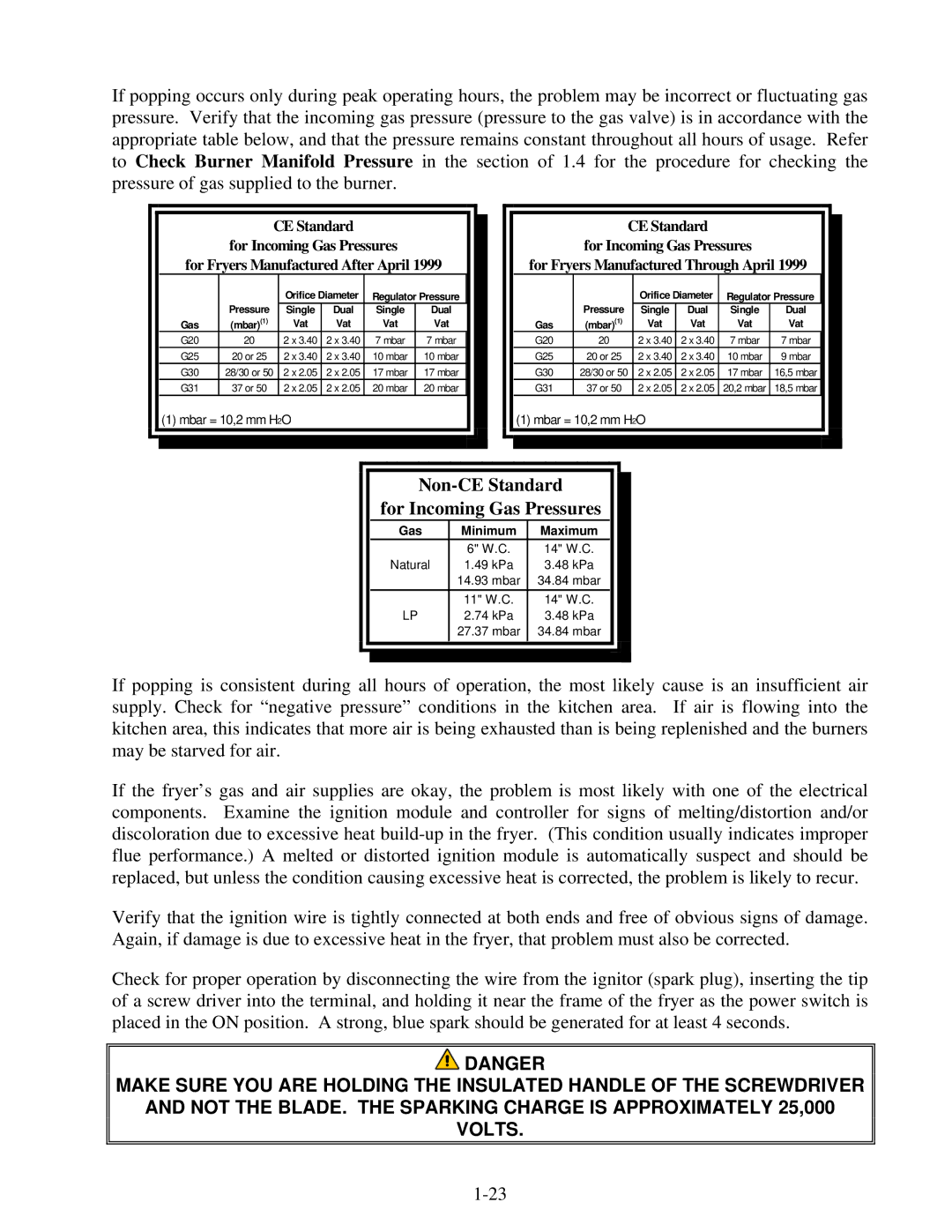H50 Series specifications
The Frymaster H50 Series represents a significant advancement in commercial deep frying technology, designed specifically for high-volume food service operations. With a focus on efficiency, ease of use, and exceptional frying quality, this series is a favorite among restaurateurs seeking to optimize their kitchen performance.One of the standout features of the Frymaster H50 Series is its Energy Efficiency. These fryers are engineered to provide superior heat transfer, allowing for quicker recovery times and reduced energy consumption. This is crucial in a busy kitchen where every second counts, and maintaining consistent oil temperatures is vital for producing perfectly cooked food.
The H50 Series incorporates the advanced computer control platform, which offers precise temperature control and monitoring. This technology allows operators to set specific frying times and temperatures for various foods, ensuring consistency and quality in every batch. Additionally, these controls include built-in safety features that help prevent overheating and potential hazards, promoting a safer working environment.
Flexibility is another hallmark of the H50 Series. These fryers can accommodate a wide range of menu items, from fries to chicken and seafood, making them an ideal choice for diverse culinary applications. The fryers also come with adjustable basket configurations and options for single or multiple frying pots, providing versatility for varying production demands.
The design of the Frymaster H50 Series is focused on ease of use and maintenance. The fryers feature a user-friendly interface, making it simple for staff to operate them even during peak hours. Maintenance is streamlined through easy access to components, ensuring that cleaning and servicing can be carried out quickly, minimizing downtime and enhancing productivity.
Durability is another key characteristic of the Frymaster H50 Series. Constructed with high-quality materials, these fryers are built to withstand the rigors of a commercial kitchen. The stainless steel exterior not only adds to the aesthetic appeal but also offers resistance to corrosion and damage, ensuring that these fryers will perform reliably over time.
In summary, the Frymaster H50 Series combines energy efficiency, advanced technology, operational flexibility, ease of use, and durability. This makes it a top choice for food service establishments aiming to deliver high-quality, consistently fried foods while optimizing kitchen operations. Whether you're upgrading your current equipment or starting a new venture, the H50 Series is a powerful ally in the world of commercial frying.

